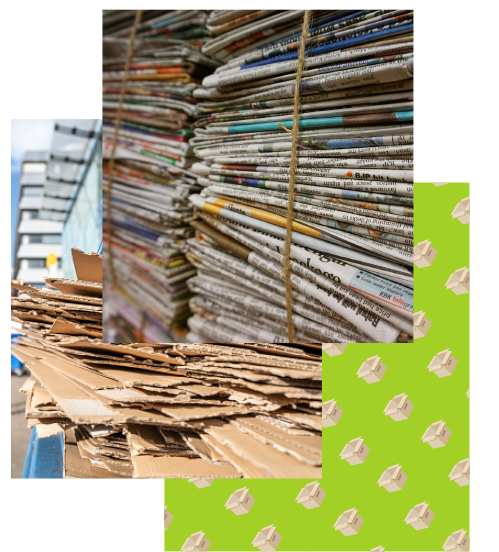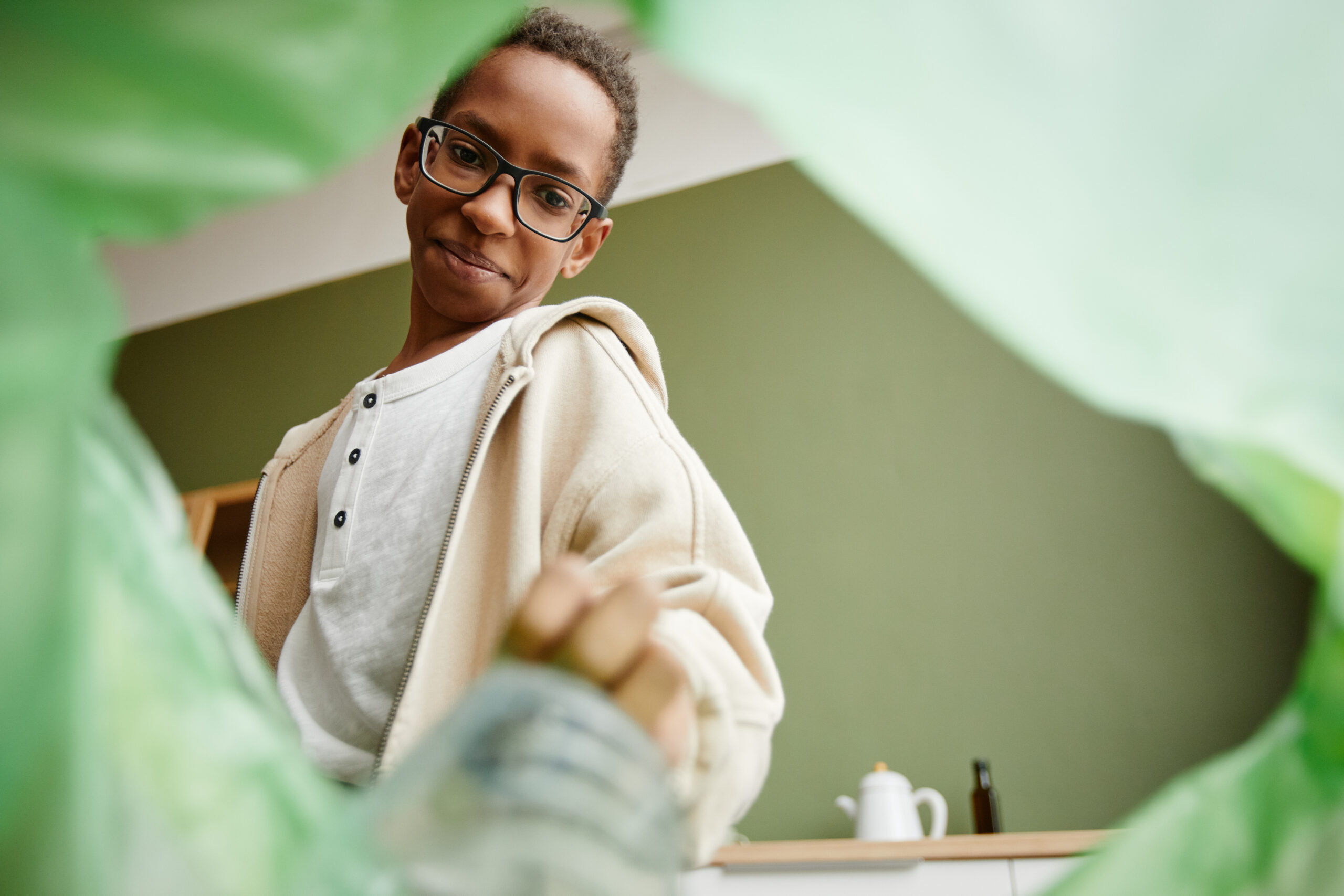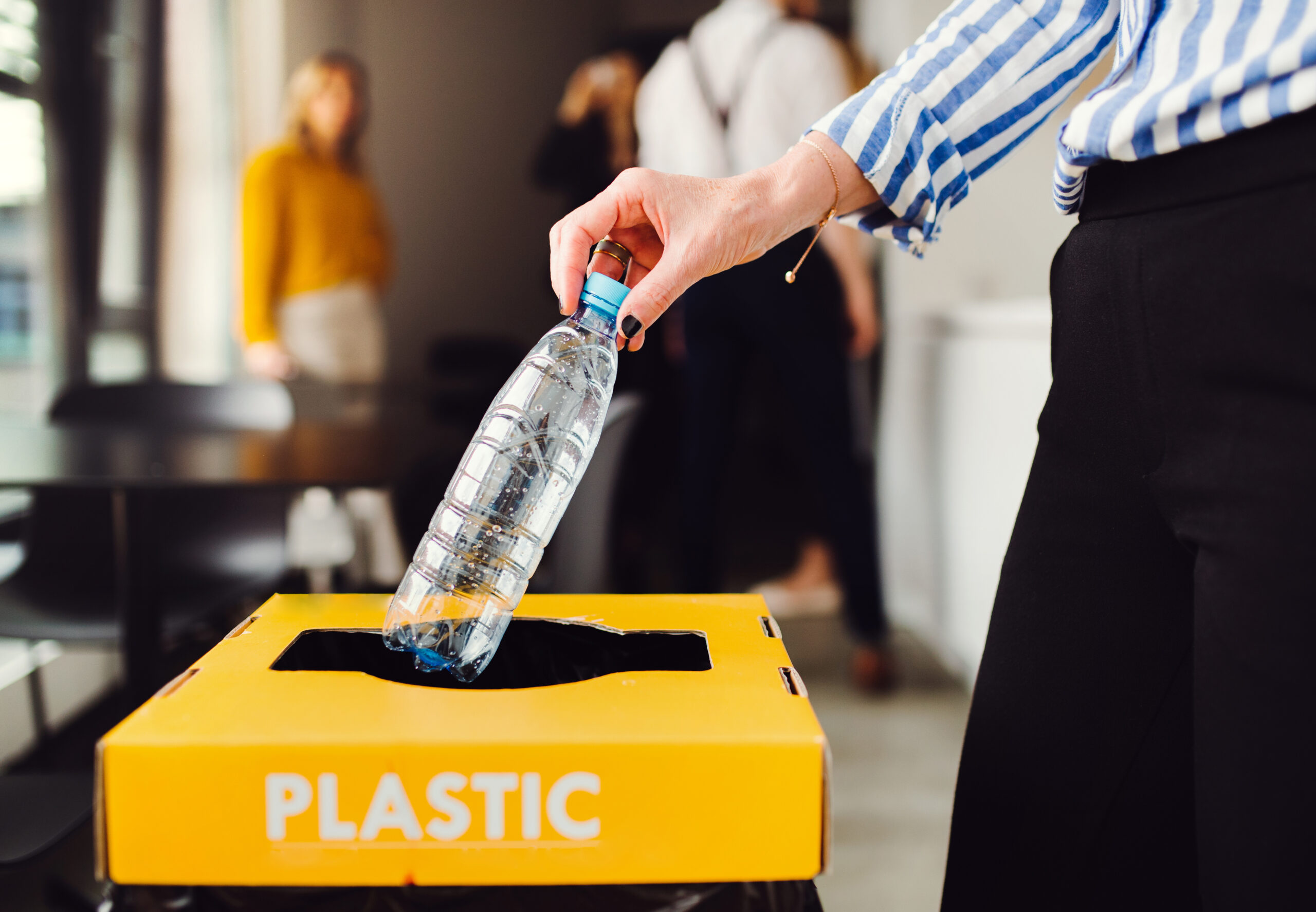RECYCLING
Recycling helps keep Fresno County clean and saves money. When we recycle right, we reduce contamination in our blue carts, avoiding extra costs for sorting out non-recyclable items. This not only cuts expenses but also conserves resources and keeps trash out of landfills.

Why Recycling Matters in Fresno County
Recycling in Fresno County has a significant impact:
- Energy Savings: Recycling one aluminum can saves enough energy to power a TV for three hours.
- Resource Conservation: Every ton of recycled cardboard saves 46 gallons of oil.
- Environmental Protection: Recycling a stack of newspaper just three feet high can save one tree.
- Electricity Savings: Recycling a single glass jar saves enough electricity to light an 11-watt CFL bulb for 20 hours.

Let’s Sort It Out: Recycling Rules
To recycle properly and help keep our county clean, follow these simple guidelines:
Accepted
The following items can be recycled in the blue cart or bin if they are clean and dry:
- Mixed waste paper (e.g., office paper, egg cartons, cereal boxes, magazines, newspapers, junk mail)
- Reusable packaging materials
- Cardboard
- Glass containers
- Plastic bottles
- Milk, juice, and soy cartons
- Scrap metal
- Steel or tin cans (clean)
- Aluminum beverage containers
Not Accepted
Some items should go in the gray cart or bin, not in the recycling:
- Plastic bags
- Garbage bags (don’t bag recyclables)
- Scrap metal & hangers
- Diapers
- Textiles (e.g., clothing, shoes)
- Pizza boxes
- Garden hoses
- Metal and plastic car parts
- Kid's toys and swimming pools
OTHER RECYCLING PROGRAMS
COMMERCIAL RECYCLING (AB 341)
Good for Our Community, Great for Your Business
Recycling isn’t just good for the environment—it can also benefit your business. Fresno County offers programs to help businesses integrate recycling into their operations. Below, you’ll find key information on how to take advantage of these opportunities and comply with California’s recycling laws.

California’s Mandatory Commercial Recycling Law (AB 341)
California’s Assembly Bill 341 (AB 341) was enacted to increase recycling rates and reduce greenhouse gas (GHG) emissions from the commercial sector. As part of the California Global Warming Solutions Act, this law mandates that businesses and multifamily residential properties meet specific recycling requirements to help the state achieve its environmental goals.
Requirements
Businesses generating four cubic yards or more of waste per week and multi-family properties with five or more units must arrange for recycling services.
Objectives
Divert 2 to 3 million tons of materials annually to reduce greenhouse gas emissions by 5 million metric tons of CO2 equivalents.
Compliance Options
- Self-haul recyclables
- Subscribe to a waste hauler
- Arrange for pickup of recyclables
- Use mixed waste processing services
Property owners can also require tenants to sort recyclables. For further details on compliance and local regulations, contact your recycling coordinator or visit CalRecycle.
Recycling Market Development Zone (RMDZ) Program
Fresno County's RMDZ Program combines recycling efforts with business growth. We help link businesses to resources for business planning and development and offer expert guidance on recycled product ideas, including support with navigating permitting requirements. Fresno County’s RMDZ Program also connects businesses, non-profits, and qualifying organizations with loan opportunities to help manage the costs of incorporating recycled materials.
For more details, click here.
RECYCLING DROP-OFF LOCATIONS
| Location Name | Address | Phone | Items | Comments |
|---|---|---|---|---|
| A-1 Recycling | 2259 W Tahoe Ave, Caruthers, CA 93609 | (559) 309-1001 | California Redemption Value (CRV) Beverage Containers. | Aluminum, glass, and plastic beverage containers must be purchased in CA to get a refund. |
| AD Recycling Kingsburg | 909 Sierra St, Kingsburg, CA 93631 | (559) 696-6349 | California Redemption Value (CRV) Beverage Containers. | Aluminum, glass, and plastic beverage containers must be purchased in CA to get a refund. |
| Allan Company Recycling (1) | 2525 S Sunland Ave, Fresno, CA 93725 | (559) 237-0590 | California Redemption Value (CRV) Beverage Containers. | Aluminum, glass, and plastic beverage containers must be purchased in CA to get a refund. |
| Allan Company Recycling (2) | 2607 E Woodward Ave, Fresno, CA 93721 | (559) 264-4804 | California Redemption Value (CRV) Beverage Containers. | Aluminum, glass, and plastic beverage containers must be purchased in CA to get a refund. |
| American Avenue Disposal Site | 18950 W American Ave, Kerman, CA 93630 | (559) 600-4259 | California Redemption Value (CRV) Beverage Containers. | Aluminum, glass, and plastic beverage containers must be purchased in CA to get a refund. |
| Bairos Recycling, Inc. | 2788 S Orange Ave, Fresno, CA 93725 | (559) 233-0922 | California Redemption Value (CRV) Beverage Containers. | Aluminum, glass, and plastic beverage containers must be purchased in CA to get a refund. |
| Belen’s Recycling (1) | 796 Fresno St, Parlier, CA 93648 | (559) 481-3330 | California Redemption Value (CRV) Beverage Containers. | Aluminum, glass, and plastic beverage containers must be purchased in CA to get a refund. |
| Belen’s Recycling (2) | 13639 Manning Ave, Parlier, CA 93648 | (559) 481-3330 | California Redemption Value (CRV) Beverage Containers. | Aluminum, glass, and plastic beverage containers must be purchased in CA to get a refund. |
| Bruno’s Iron & Metal/Recycling | 3211 S Golden State Frontage Rd, Fresno, CA 93725 | (559) 233-6543 | California Redemption Value (CRV) Beverage Containers. | Aluminum, glass, and plastic beverage containers must be purchased in CA to get a refund. |
| Buy Back, Inc. | 1405 W Shields Ave, Fresno, CA 93705 | (559) 706-2096 | California Redemption Value (CRV) Beverage Containers. | Aluminum, glass, and plastic beverage containers must be purchased in CA to get a refund. |
| Cedar Avenue Recycling and Transfer Station (CARTS) | 3457 S Cedar Ave, Fresno, CA 93725 | (559) 233-1158 | California Redemption Value (CRV) Beverage Containers, Chipboard, Large Furniture, Green Waste | Aluminum, glass, and plastic beverage containers must be purchased in CA to get a refund. |
| Central Valley Recycling | 1367 Marion St, Kingsburg, CA 93631 | (559) 305-9337 | California Redemption Value (CRV) Beverage Containers. | Aluminum, glass, and plastic beverage containers must be purchased in CA to get a refund. |
| Clovis Recycling (1) | 1059 Hoblitt Ave, Clovis, CA 93612 | California Redemption Value (CRV) Beverage Containers. | Aluminum, glass, and plastic beverage containers must be purchased in CA to get a refund. | |
| Clovis Recycling (2) | 710 Jefferson Ave, Clovis, CA 93612 | California Redemption Value (CRV) Beverage Containers. | Aluminum, glass, and plastic beverage containers must be purchased in CA to get a refund. | |
| Curbside Recycling | 4825 E Olive Ave, Fresno, CA 93727 | (559) 718-3690 | California Redemption Value (CRV) Beverage Containers. | Aluminum, glass, and plastic beverage containers must be purchased in CA to get a refund. |
| Dinuba Mini Mart Recycling | 10014 S Alta Ave, Reedley, CA 93654 | (559) 723-0104 | California Redemption Value (CRV) Beverage Containers. | Aluminum, glass, and plastic beverage containers must be purchased in CA to get a refund. |
| Discount General Merchandise | 370 B St, Fresno, CA 93706 | (559) 706-6399 | California Redemption Value (CRV) Beverage Containers. | Aluminum, glass, and plastic beverage containers must be purchased in CA to get a refund. |
| Dreams Recycling, LLC | 15401 W California Ave, Kerman, CA 93630 | (559) 846-9551 | California Redemption Value (CRV) Beverage Containers. | Aluminum, glass, and plastic beverage containers must be purchased in CA to get a refund. |
| EOC Local Conversation Corps Recycling | 17108 N Friant Rd, Friant, CA 93626 | (510) 304-1435 | California Redemption Value (CRV) Beverage Containers. | Aluminum, glass, and plastic beverage containers must be purchased in CA to get a refund. |
| Eva’s Recycling | 4386 W Shields Ave, Fresno, CA 93722 | (559) 519-8107 | California Redemption Value (CRV) Beverage Containers. | Aluminum, glass, and plastic beverage containers must be purchased in CA to get a refund. |
| F & T Recycling | 29424 Auberry Rd, Prather, CA 93651 | (559) 299-8807 | California Redemption Value (CRV) Beverage Containers. | Aluminum, glass, and plastic beverage containers must be purchased in CA to get a refund. |
| Fresno Recycling | 1701 S Orange Ave, Fresno, CA 93702 | (559) 264-6303 | California Redemption Value (CRV) Beverage Containers. | Aluminum, glass, and plastic beverage containers must be purchased in CA to get a refund. |
| I Buy Recycling | 3232 E Ventura Ave, Fresno, CA 93702 | (559) 706-4106 | California Redemption Value (CRV) Beverage Containers. | Aluminum, glass, and plastic beverage containers must be purchased in CA to get a refund. |
| Jesus Facility | 12511 G St, Biola, CA 93606 | (559) 430-4096 | California Redemption Value (CRV) Beverage Containers. | Aluminum, glass, and plastic beverage containers must be purchased in CA to get a refund. |
| KBJ Recycling | 325 L St, Sanger, CA 93657 | (559) 281-5501 | California Redemption Value (CRV) Beverage Containers. | Aluminum, glass, and plastic beverage containers must be purchased in CA to get a refund. |
| Los Botis Recycling (1) | 1217 9th St, Sanger, CA 93657 | (559) 694-1204 | California Redemption Value (CRV) Beverage Containers. | Aluminum, glass, and plastic beverage containers must be purchased in CA to get a refund. |
| Los Botis Recycling (2) | 5789 Anthony, Tranquillity, CA 93668 | (559) 694-1204 | California Redemption Value (CRV) Beverage Containers. | Aluminum, glass, and plastic beverage containers must be purchased in CA to get a refund. |
| LTS Recycling | 21727 Manning Ave, San Joaquin, CA 93660 | (559) 790-6056 | California Redemption Value (CRV) Beverage Containers. | Aluminum, glass, and plastic beverage containers must be purchased in CA to get a refund. |
| Household Hazardous Waste Facility | 1327 W Dan Ronquillo Dr, Fresno, CA 93706 | (559) 600-4259 | Chipboard | |
| Mid Valley Disposal | 2721 S Elm Ave, Fresno, CA 93706 | (559) 237-9425 | Large Furniture, Green Waste | |
| Mid Valley Disposal | 15300 W Jensen Ave, Kerman, CA 93630 | (559) 237-9425 | Chipboard | |
| Mid Valley Recycling | 985 E Manning Ave, Reedley, CA | (559) 706-3973 | California Redemption Value (CRV) Beverage Containers. | Aluminum, glass, and plastic beverage containers must be purchased in CA to get a refund. |
| Mondragon Recycling Center (1) | 5688 S Elm Ave, Fresno, CA 93706 | (559) 706-4930 | California Redemption Value (CRV) Beverage Containers. | Aluminum, glass, and plastic beverage containers must be purchased in CA to get a refund. |
| Mondragon Recycling Center (2) | 12944 S Elm Ave, Caruthers, CA 93609 | (559) 706-4930 | California Redemption Value (CRV) Beverage Containers. | Aluminum, glass, and plastic beverage containers must be purchased in CA to get a refund. |
| Quiroz Recycling | 2507 Nebraska Ave, Selma, CA 93662 | (559) 856-4892 | California Redemption Value (CRV) Beverage Containers. | Aluminum, glass, and plastic beverage containers must be purchased in CA to get a refund. |
| Radius Recycling | 2727 S Chestnut Ave, Fresno, CA 93725 | (559) 233-3211 | California Redemption Value (CRV) Beverage Containers. | Aluminum, glass, and plastic beverage containers must be purchased in CA to get a refund. |
| Ramirez Recycling Center | 940 Park Blvd, Orange Cove, CA 93646 | (559) 623-3257 | California Redemption Value (CRV) Beverage Containers. | Aluminum, glass, and plastic beverage containers must be purchased in CA to get a refund. |
| RC Recycling | 36240 Lassen Ave, Huron, CA 93234 | (559) 772-9950 | California Redemption Value (CRV) Beverage Containers. | Aluminum, glass, and plastic beverage containers must be purchased in CA to get a refund. |
| RD Recycling Center | 2581 S Golden State Blvd, Fowler, CA 93625 | (559) 238-5854 | California Redemption Value (CRV) Beverage Containers. | Aluminum, glass, and plastic beverage containers must be purchased in CA to get a refund. |
| Recycle OXBA | 3053 E Shields Ave, Fresno, CA 93726 | (559) 673-6463 | California Redemption Value (CRV) Beverage Containers. | Aluminum, glass, and plastic beverage containers must be purchased in CA to get a refund. |
| Recyco, Inc. | 4585 E Olive Ave, Fresno, CA 93702 | (559) 255-9500 | California Redemption Value (CRV) Beverage Containers. | Aluminum, glass, and plastic beverage containers must be purchased in CA to get a refund. |
| Recycling of Reedley | 640 E Dinuba Ave, Reedley, CA 93654 | (559) 317-1659 | California Redemption Value (CRV) Beverage Containers. | Aluminum, glass, and plastic beverage containers must be purchased in CA to get a refund. |
| Rios Recycling (1) | 105 Baker St, Coalinga, CA 93210 | (559) 647-4449 | California Redemption Value (CRV) Beverage Containers. | Aluminum, glass, and plastic beverage containers must be purchased in CA to get a refund. |
| Rios Recycling (2) | 452 Naples St, Mendota, CA 93640 | (559) 647-4449 | California Redemption Value (CRV) Beverage Containers. | Aluminum, glass, and plastic beverage containers must be purchased in CA to get a refund. |
| Rios Recycling (3) | 1639 N St, Firebaugh, CA 93622 | (559) 647-4449 | California Redemption Value (CRV) Beverage Containers. | Aluminum, glass, and plastic beverage containers must be purchased in CA to get a refund. |
| SA Recycling | 3489 S Chestnut Ave, Fresno, CA 93725 | (559) 237-6677 | California Redemption Value (CRV) Beverage Containers. | Aluminum, glass, and plastic beverage containers must be purchased in CA to get a refund. |
| Salinas Recycling (1) | 2965 Whitson St, Selma, CA 93662 | (559) 647-4449 | California Redemption Value (CRV) Beverage Containers. | Aluminum, glass, and plastic beverage containers must be purchased in CA to get a refund. |
| Salinas Recycling (2) | 3706 McCall Ave, Selma, CA 93662 | (559) 647-4449 | California Redemption Value (CRV) Beverage Containers. | Aluminum, glass, and plastic beverage containers must be purchased in CA to get a refund. |
| Salinas Recycling (3) | 1368 Church Ave, Sanger, CA 93657 | (559) 213-5449 | California Redemption Value (CRV) Beverage Containers. | Aluminum, glass, and plastic beverage containers must be purchased in CA to get a refund. |
| Skee's Recycling, Inc. | 4628 E Thomas Ave, Fresno, CA 93702 | (555) 255-8355 | California Redemption Value (CRV) Beverage Containers. | Aluminum, glass, and plastic beverage containers must be purchased in CA to get a refund. |
| Tollhouse | 1427 Tollhouse Rd, Clovis, CA 93611 | (559) 706-6399 | California Redemption Value (CRV) Beverage Containers. | Aluminum, glass, and plastic beverage containers must be purchased in CA to get a refund. |
| Waste Management | 5608 S Villa Ave, Fresno, CA 93725 | (559) 834-4070 | California Redemption Value (CRV) Beverage Containers, Chipboard | Aluminum, glass, and plastic beverage containers must be purchased in CA to get a refund. |
| Western Metal Co. | 2910 S Cherry Ave, Fresno, CA 93706 | (559) 264-6246 | California Redemption Value (CRV) Beverage Containers. | Aluminum, glass, and plastic beverage containers must be purchased in CA to get a refund. |
| X-Change Recycling | 2664 Jensen Ave, Sanger, CA 93657 | (559) 479-0735 | California Redemption Value (CRV) Beverage Containers. | Aluminum, glass, and plastic beverage containers must be purchased in CA to get a refund. |
Disclaimer: Please note that not all disposal services are free. Contact drop-off locations in advance to inquire about disposal fees and confirm they will accept your items at the time of your visit.
FREQUENTLY ASKED QUESTIONS (FAQ)
NEED HELP?
For questions or more information, contact the Resources Division at (559) 600-4259 or email recycling@fresnocountyca.gov. Let’s work together to keep Fresno County clean and green!
For more details, visit the Fresno County Recycling Resource page.

